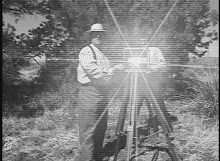
One Picture 1000 Words
The saying that one picture is worth a thousand words is wrongly attributed to Confucius. It was actually coined by an early American advertising manager, Fred R. Barnard. He wrote it as copy for an ad that appeared in Printers' Ink in 1927. The ad, in turn, promoted the sale of yet other ad space on the sides of city streetcars. His pitch was that an ad with a large picture on the side of a fast moving streetcar would be quickly and easily ‘read’ by pedestrians.
The saying fast gained wide currency. This isn’t surprising. It succinctly expresses what people already intuitively understood. Given its resonance and given the advent of mass communications advertising, it was bound to spread. That Barnard unethically called it a Chinese proverb is an even more revealing insight about the power of images and the social imagination. Clearly he wanted to give the saying a patina of legitimacy by associating it with an ancient culture. It almost immediately became ascribed to Confucius.
This too isn’t surprising. Confucius had been known in the West since the 1600s, thanks to Jesuit missionaries. Later, leading philosophers such as Voltaire embraced Confucian ideas such as atheistic philosophy and political morality and ethics. By the early 20th century, Confucius was well ensconced in the popular Western mind as a symbol of wisdom. Paradoxically, Bernard’s false attribution registered authentic precisely because one could easily imagine Confucius saying it. It isn’t just that the Chinese alphabet is composed of ideograms, or word pictures, thus giving the attribution extra credibility. It’s rather because Barnard’s saying actually embodies timeless wisdom. He simply brought this to light in ‘modern’ times.

No comments:
Post a Comment